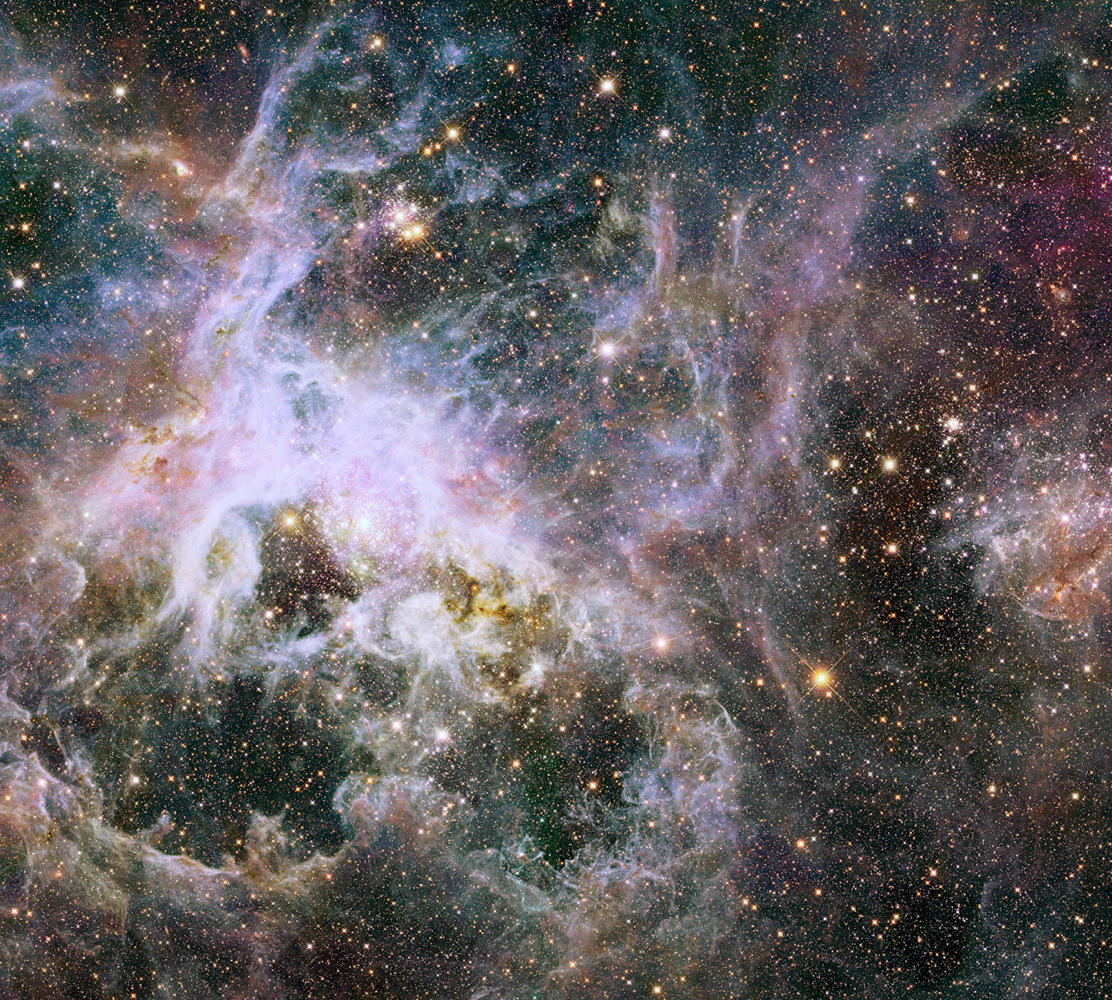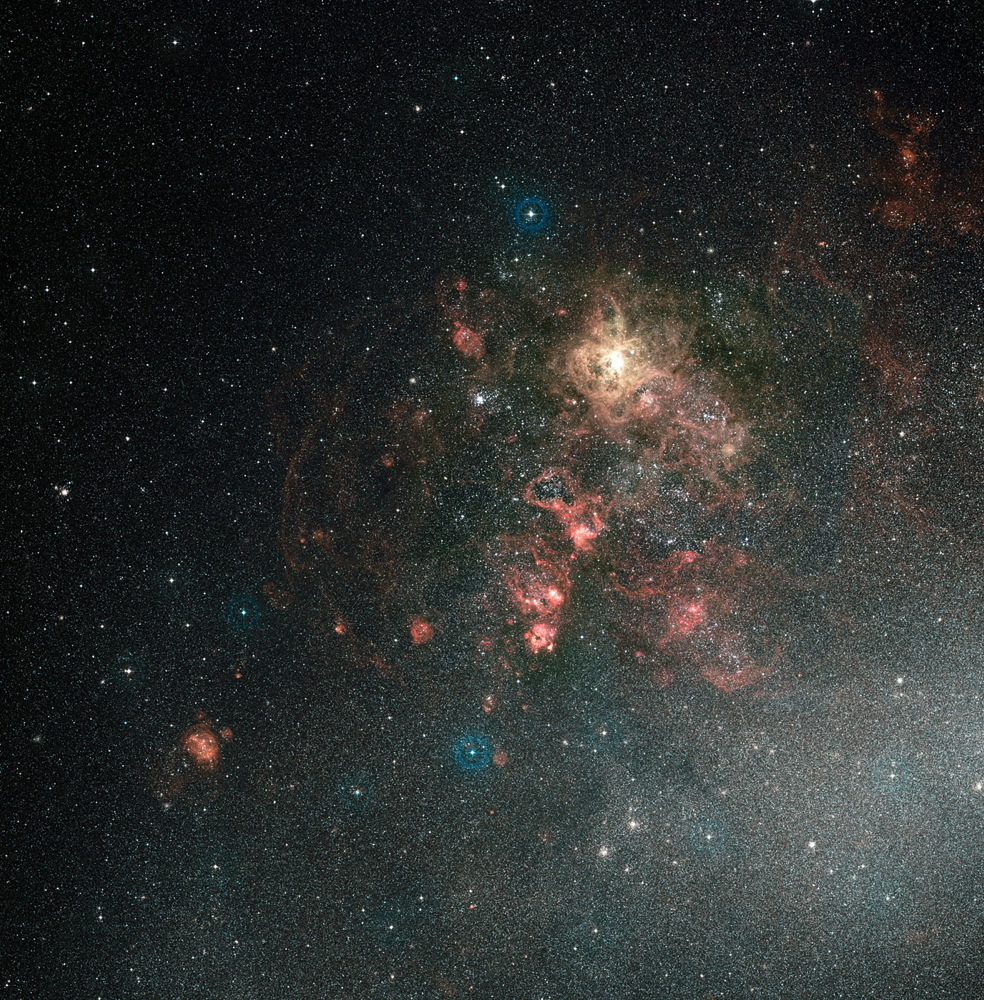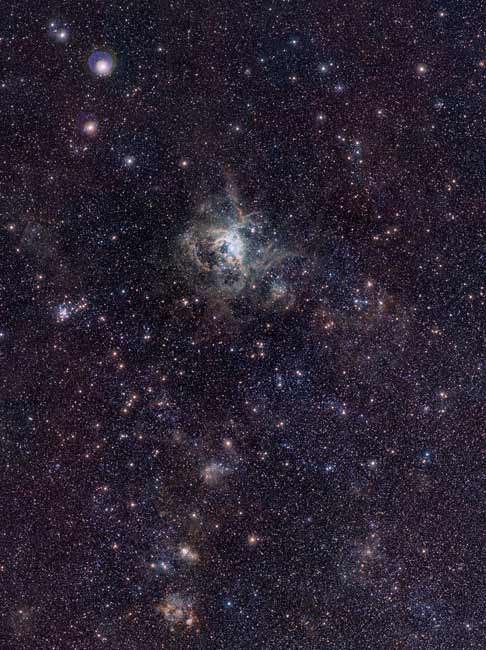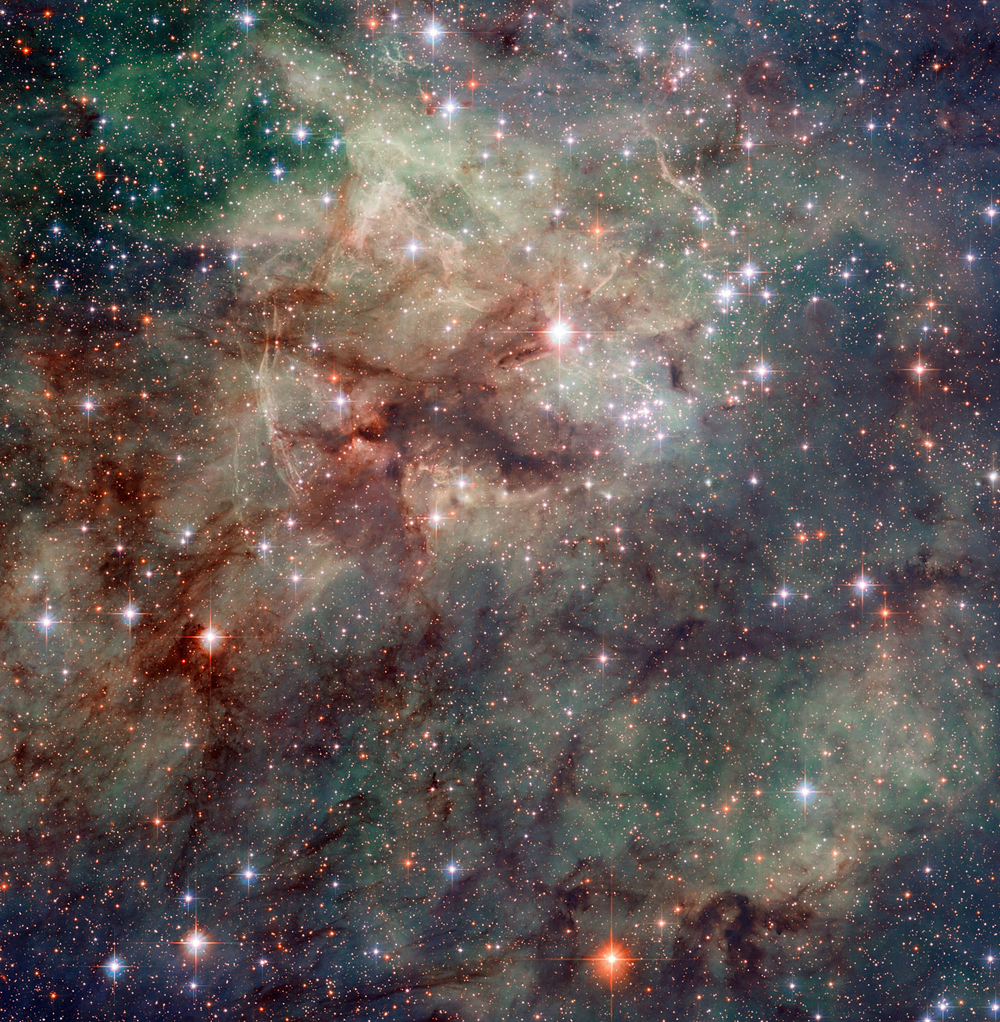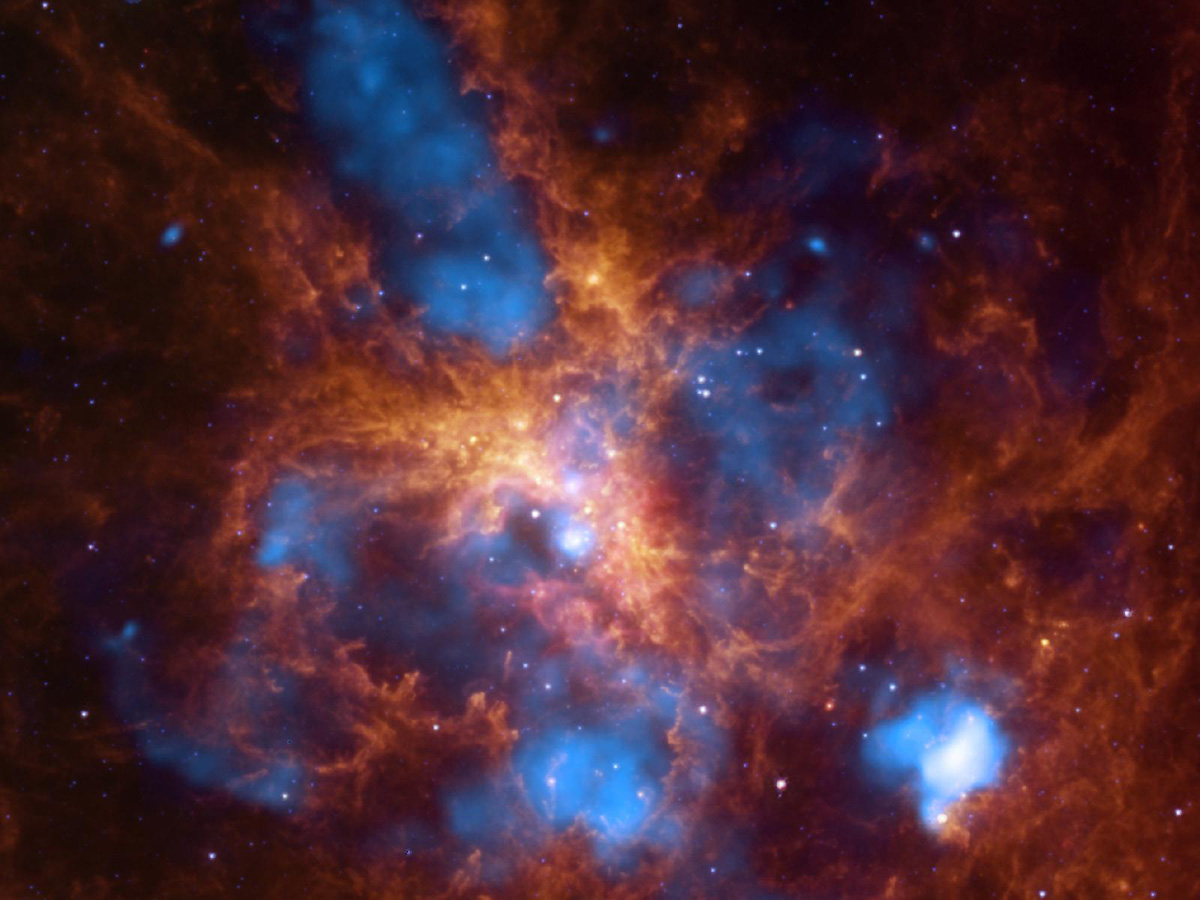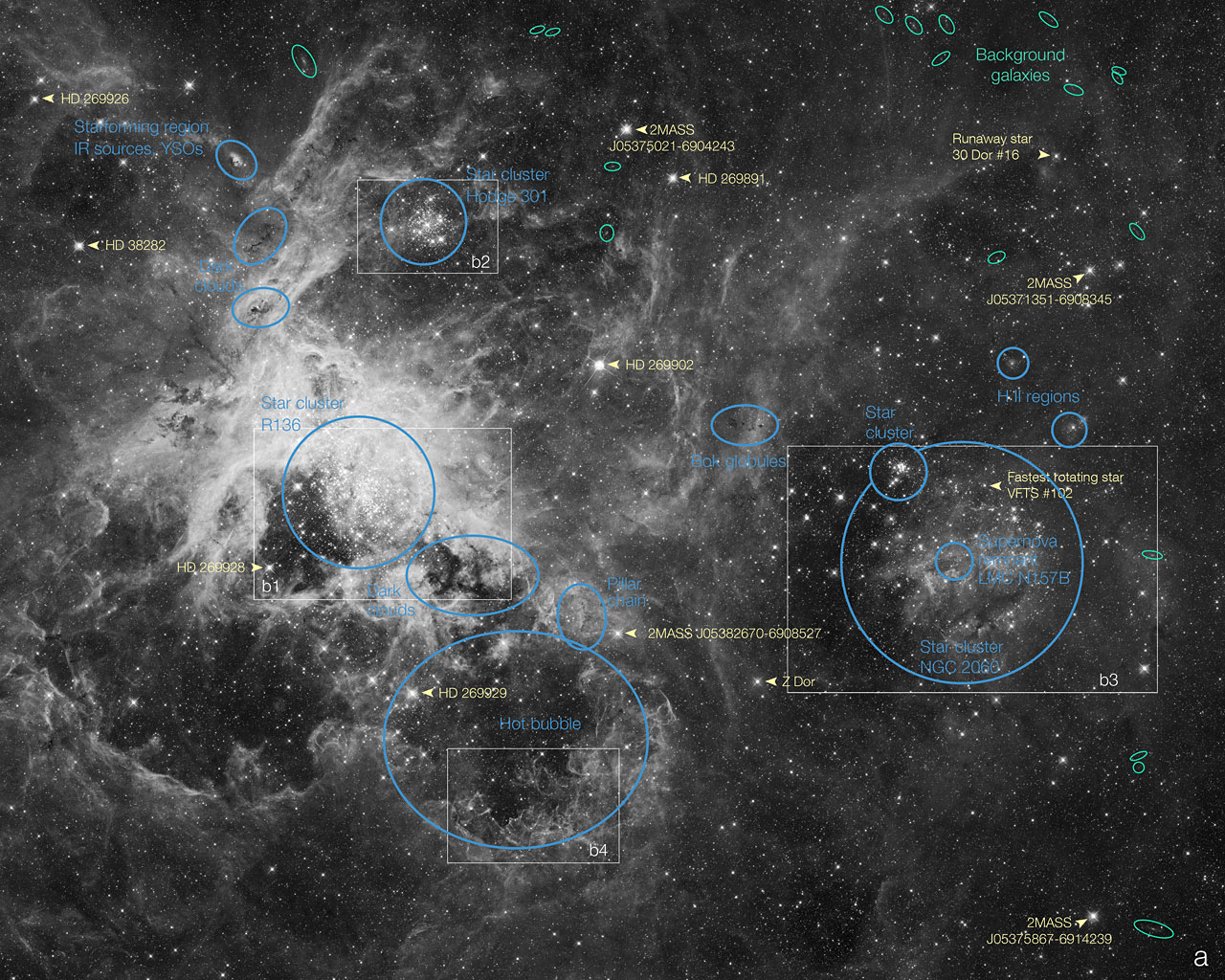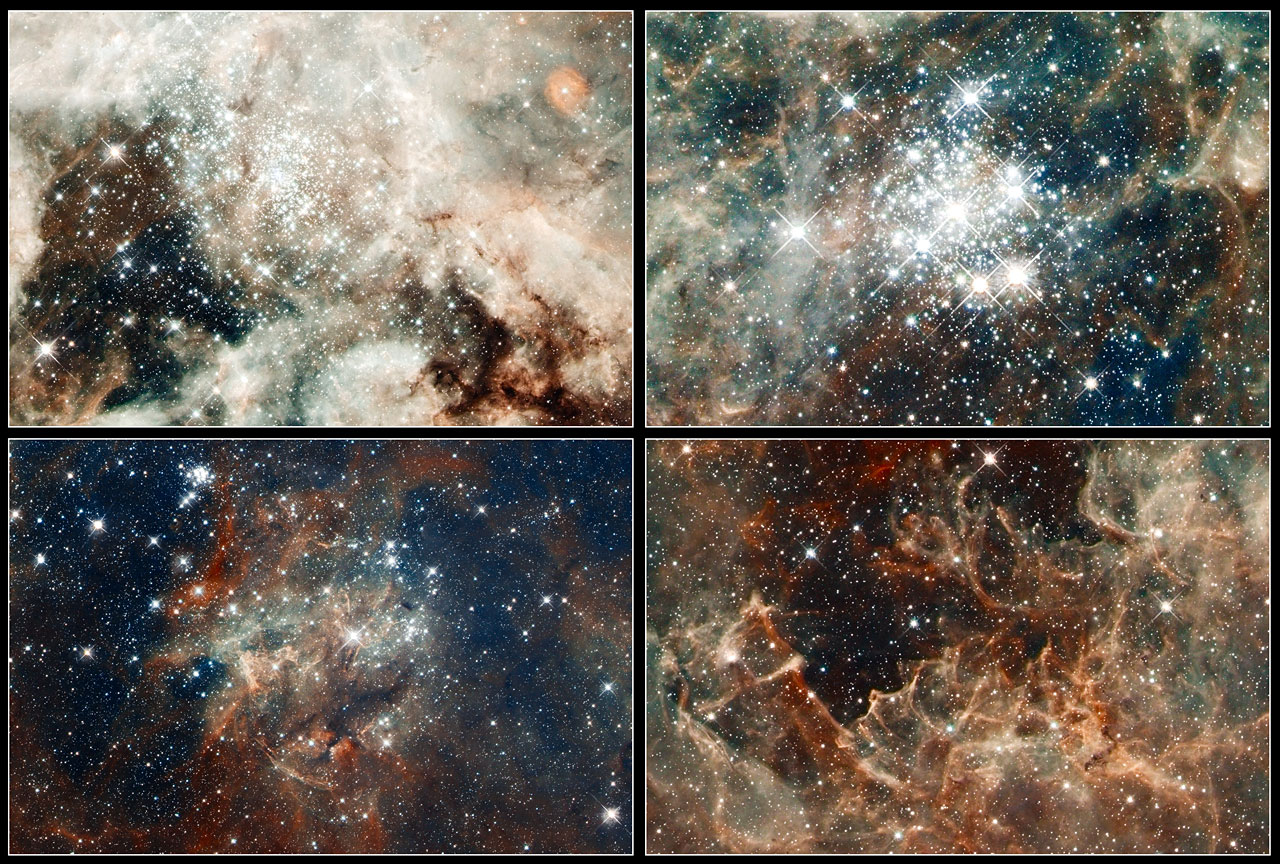Cosmic Spider: Amazing Tarantula Nebula Photos
New Hubble Infrared View of the Tarantula Nebula
This new Hubble image shows a cosmic creepy-crawly known as the Tarantula Nebula in infrared light. This region is full of star clusters, glowing gas, and thick dark dust. Image released Jan. 9, 2014. [Read the Full Story Behind This Photo Here]
Hubble Optical View of the Tarantula Nebula
This new Hubble image shows a cosmic creepy-crawly known as the Tarantula Nebula in visible, infrared and ultraviolet light. This region is full of star clusters, glowing gas, and thick dark dust. Image released Jan. 9, 2014. [Read the Full Story Behind This Photo Here]
Comparing Optical and Infrared Hubble Views of the Tarantula Nebula
Created using observations taken as part of the Hubble Tarantula Treasury Project (HTTP), these images were snapped using Hubble's Wide Field Camera 3 (WFC3) and Advanced Camera for Surveys (ACS). Image released Jan. 9, 2014. [Read the Full Story Behind This Photo Here]
Wide-Field View of the Tarantula Nebula
This ground-based view of the Tarantula Nebula shows the nebula in its entirety. It is the brightest region of star formation in the local Universe. Hubble’s field of view covers just a tiny spot in the upper-right quadrant of this image, though it reveals detail invisible here, including a supernova remnant. Image released March 15, 2011. [Read the Full Story Behind This Photo Here]
New Planet-Hunting Robot Telescope Takes First Photos
This first light image of the TRAPPIST national telescope at La Silla shows the Tarantula Nebula, located in the Large Magellanic Cloud (LMC) — one of the galaxies closest to us. Also known as 30 Doradus or NGC 2070, the nebula owes its name to the arrangement of bright patches that somewhat resembles the legs of a tarantula. Full Story.
Baby Stars Sparkle in New Photo of Tarantula Nebula
This VISTA image shows the spectacular 30 Doradus star-forming region, also called the Tarantula Nebula. At its core is a large cluster of stars known as R 136, in which some of the most massive stars known are located. This infrared image, made with ESO's VISTA survey telescope, is from the VISTA Magellanic Cloud Survey.
Tarantula Nebula
Hubble has taken this stunning close-up shot of part of the Tarantula Nebula. This star-forming region of ionised hydrogen gas is in the Large Magellanic Cloud, a small galaxy which neighbours the Milky Way.
Breaking space news, the latest updates on rocket launches, skywatching events and more!
Star-Forming Region 30 Doradus
The star-forming region, 30 Doradus, is one of the largest located close to the Milky Way and is found in the neighboring galaxy, Large Magellanic Cloud. About 2,400 massive stars in the center of 30 Doradus, also known as the Tarantula Nebula, are producing intense radiation and powerful winds as they blow off material.
Hubble Telescope's Labeled Look: Tarantula Nebula
This annotated map identifies several prominent features in an image of the Tarantula Nebula (also known as 30 Doradus), a prominent region of star formation located in the Large Magellanic Cloud (LMC) the nearest neighboring galaxy to the Milky Way. The image was taken by the Hubble Space Telescope and released April 17, 2012.
Tarantula Nebula by Hubble, ESO: 4 Views
These four Hubble Space Telescope views are part of a massive mosaic of the Tarantula nebula released on April 17, 2012. They show: the young star cluster NGC 2070 (top left), star cluster NGC 2060 (bottom left), Hodge 301 star cluster (top right), and the region RMC 136, which is home to massive stars.
Tarantula Nebula for Hubble Telescope's 22nd B-Day
This photo from the Hubble Space Telescope shows the heart of the Tarantula nebula, a region teeming with star formation. The image is a giant mosaic view released on April 17, 2012 to mark Hubble's 22nd anniversary in space. ESO telescope observations augment the view.

Space.com is the premier source of space exploration, innovation and astronomy news, chronicling (and celebrating) humanity's ongoing expansion across the final frontier. Originally founded in 1999, Space.com is, and always has been, the passion of writers and editors who are space fans and also trained journalists. Our current news team consists of Editor-in-Chief Tariq Malik; Editor Hanneke Weitering, Senior Space Writer Mike Wall; Senior Writer Meghan Bartels; Senior Writer Chelsea Gohd, Senior Writer Tereza Pultarova and Staff Writer Alexander Cox, focusing on e-commerce. Senior Producer Steve Spaleta oversees our space videos, with Diana Whitcroft as our Social Media Editor.
